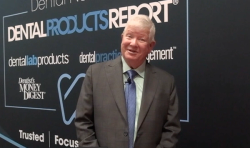- About Us
- Advertise
- Editorial
- Contact Us
- Terms and Conditions
- Privacy Policy
- Do Not Sell My Personal Information
© 2025 MJH Life Sciences™ and Dental Products Report. All rights reserved.
5 Dental Products That Will Never Be Replaced
A look at categories of dental products that will always be a part of providing dental care, even as technologies, form factors, and other aspects of these tools and instruments continue to change.
Nothing lasts forever. Although the purpose of a product, device, or system may never change, it is very likely that its design features will evolve over time.
With that in mind, there are numerous types of products that will always be a part of the practice of dentistry. Although these types of products have and will be enhanced with new features and innovative designs, their core functions remain essential to the practice of dentistry, and they are highly unlikely to be completely replaced by a new technology.
Seating
Dentistry is almost always practiced with the patient and the clinician seated, and thus some form of seating is likely to stay. Patient chairs have gone through multiple rounds of innovation. New features are designed to enhance patient comfort, and some chairs are smart systems with internet connectivity and integration with other practice systems. Still, they are chairs at their core. The same is true for clinician seating. Options and styles continue to change, and ergonomic advancements are helping clinicians avoid injury, but they’re still seats. Unless chairs are replaced by some sort of antigravity technology, dental patient and clinician seating is here to stay.
Lighting
There’s an adage that states, “You can’t treat what you can’t see.” But the inside of a patient’s mouth is a dark place. Lighting is a key part of dentistry because it makes the oral cavity visible for both diagnostics and treatment. The style and placement of dental lighting continue to change as many practices forgo overhead lights in favor of loupe-mounted illumination. Still, the concept remains unchanged, and dental lighting always will be needed.
Imaging
Imaging technologies have revolutionized dentistry when it comes to diagnostics, treatment planning, case documentation, and patient education. Capturing images of the exterior and interior structures of a patient’s dentition is critical to practicing dentistry. So as the styles of cameras continue to advance, radiation use will continue to be minimized and new technologies will likely make imaging more detailed as well as safer for patients and clinicians. Capturing photos, scans, and radiographs will remain a part of practicing dentistry.
Personal Protective Equipment (PPE)
This category has seen an innovation boom in the past year due to the COVID-19 pandemic. PPE will always be a part of dental practice because the mouth remains a major waypoint for pathogens. Looking into and working in a patient’s mouth comes with the risk of pathogen exposure, not to mention the added risk of contact with blood and other fluids from dental instruments kicking up a splatter of these potentially harmful materials. Dental professionals will always need masks, gloves, gowns, and other types of PPE to keep themselves safe and reduce the risks of cross-contamination.
Toothbrush
It may seem simple, but in one form or another, the toothbrush has been around for more than a millennium; the modern toothbrush,—for more than 150 years. Over time, the design has been refined in a multitude of ways, and powered versions continue to push the limits of what a toothbrush can do and how effectively it can clean teeth. It’s possible that toothbrushing might be replaced by an antimicrobial solution that eliminates harmful bacteria without the use of a brush, but it’s likely that the concept of rubbing a bristled device across the teeth will be a standard way of caring for oral health for many years to come.

 Download Issue: Dental Products Report September 2021
Download Issue: Dental Products Report September 2021

